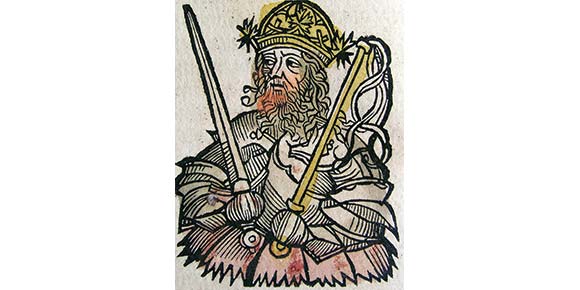Either from experience or hearsay, everyone knows what a honeymoon is, but not even most marriage professionals know why it’s called that. Let’s examine the various explanations which seek to explain why a honeymoon is called a honeymoon.
Oxford, dating the term to 1546, defines it this way: “The first month after marriage. Today, usually the holiday spent together by a newly married couple before settling down at home.” Sadly, Oxford doesn’t explain how this holiday got its name.
Edwin Radford (To Coin a Phrase) makes an educated guess saying the word is from an old Germanic custom that decreed newlyweds must drink diluted honey for 30 days following the wedding feast.
Myron Korash warns of dangers associated with honey drinking. Noting that newly-married couples were compelled to drink metheglin (fermented honey) from one full moon to the next, he points out that the great warrior, Attila the Hun, died from drinking too much honey at his wedding feast (Common Phrases).
Nigel Rees (Dictionary of Catchphrases) agrees re newlywed honey drinking calling the fermented honey, mead. In fact, metheglin, hydromel and mead are all the same thing — wine made from honey. This honey supposedly provided the couple with enough sweetness to help them keep their wedding vows forever.
A special newlywed period is known in many lands and dates back to antiquity. Ancient Teutons and Babylonians all drank honey wine for one month after marrying. And, in France, the honeymoon is known as la luna de miel; in Italian, it’s luna di miele; in Spanish, luna de miel; while Poles say, miodowy mesiac. Translated, these phrases all mean, “month of honey.”
The obvious conclusion is that newlyweds experience only sweetness and pleasure but, as the marriage ages, that idyllic situation wanes. Like the moon.
Along these same lines, a 1656 definition from Blount’s Glosso Graphia explains: “Hony-moon, applyed to those marryed persons that love well at first, and decline in affection afterwards; it is hony now, but will change as the moon.”
In Richard Huleot’s, Abecedareion (c.1550), we find, “Hony moon, a term proverbially applied to such as be newe married, whiche wyll fall out at the fyrste, the one loueth the other at the beginnynge excedyngly, the likelyhode of theyr excedynge loue appearing to aswage, ye which time the vulgar people cal the hony mone, Aphrodisia.”
English is notorious for taking a word from one situation and imposing it on another. So it’s unsurprising to find honeymoon applied to relationships which have nothing to do with marriage. For example, right now, with polls showing a decline in Justin Trudeau’s popularity, journalists and pundits are loudly declaring, “The honeymoon is over.” This usage receives fourth status in dictionaries and is characterized this way: “The early, usually calm, period of a relationship such as a political or business one.”
The Norse word hjunottsmanathr (in hiding) is sometimes suggested as the origin of the word honeymoon. Whatever the true source, it’s obvious the word honey refers to a new marriage’s sweetness, while moon (month) tells how long that sweetness might endure.
(Write to Kathleen at 6110-177 Victor Lewis Drive, Winnipeg, Manitoba R3P 2A1.)



